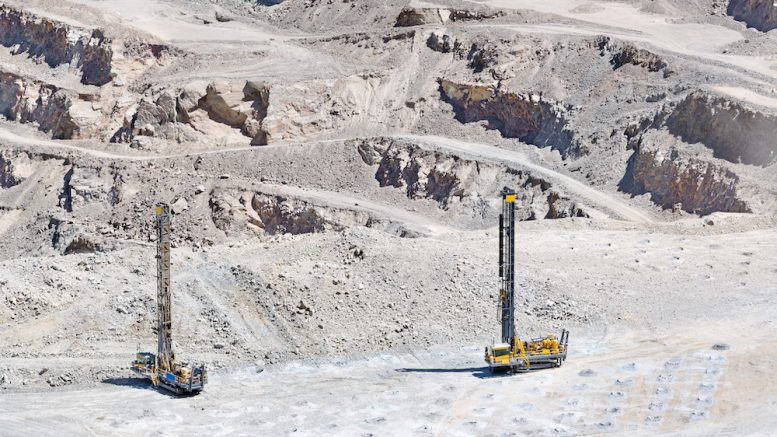Rock hardness, or the compressive strength of ore that has to be blasted, chipped or otherwise dug out of the earth, is an often-overlooked cost to mining. Research by Costmine Intelligence, part of The Northern Miner group, shows how hardness increases expenses.
Operating costs at a hypothetical open-pit gold heap-leach mine rose from US$28.64 per tonne of ore in the weakest rock mining scenario to US$33.59 a tonne in the strongest, according to Costmine data. Total capital costs over a 14-year mine life likewise increased from US$259.2 million to US$284.6 million.
Companies typically invest in analyzing and designing projects according to ore grade, deposit depth, mineralogy, labour and energy costs, as well as environmental regulations, Costmine mining engineer and cost estimator Ali Vossoughian says. But they may neglect rock strength.
“The influence of compressive strength on mining costs has often been underestimated,” Vossoughian said. “The ability of a rock or ore body to resist compression or breakage is an essential geological property that directly influences the choice of mining methods, equipment selection, fragmentation and overall operational planning.”

Operating cost is more expensive when ore has higher rock compression. Credit: Ali Vossoughian, Costmine Intelligence / Barb Burrows, Northern Miner
Five models
Compressive strength is measured in kilopascals, where 1 kPa is the pressure exerted by a 10-gram mass resting on a 1-sq.-cm area. For example, the earth’s air pressure at sea level is 101.3 kPa or 1 atmosphere.
Costmine created a set of five identical mine models with different compressive strengths ranging from 80,000 kPa to 240,000 kPa with a 40,000 kPa increment. Graphs of the scenario costs on this page are condensed to show only the strongest and weakest compression models.
Each model assumes a mine life of 14 years composed of a two-year pre-production period with 3.5 million tonnes of stripping and four three-year phases, each averaging 40,000 ore tonnes per day. The total mineable resources are estimated at 168 million tonnes, and the mine operates on a schedule of two 12-hour shifts a day for 350 days a year.

Capital costs also increase with rock compression. Credit: Ali Vossoughian, Costmine Intelligence/ Barb Burrows, Northern Miner
Careful budgeting
Obviously, the harder the rock, the more drilling and explosives are needed to put in those holes. Miners also will require more labour, cap, primers and detonation cord.
Drill bits will wear out more quickly the higher the rock’s compressive strength, and may require more rigs to achieve the same results. Denser rock may require more hauling trucks, and equipment needs fuel. It all may heighten demand for drillers, drivers and mechanics.
Costmine considered operating costs to include supplies, hourly labour, equipment operation, salaried labour and miscellaneous expenses. See the full report and tables here.
Capital costs cover expenditures such as equipment, pre-production development, facilities, working capital, engineering/management and contingency, which is 10% of the sub-total.
The rising trends in operating and capital costs highlight the need for careful budgeting and resource allocation, Costmine says.


Be the first to comment on "Blast it! How rock hardness inflates mining costs"